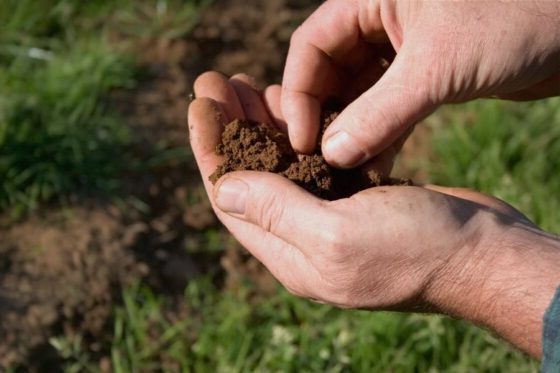Looking to have a thriving garden? The key lies in how well you prepare the soil. But fret not, as we’re here to guide you through the process of preparing the soil of your garden. In this article, we’ll share practical tips and techniques to ensure that your soil is ready to nourish your plants to their fullest potential.
So, whether you’re a beginner or an experienced gardener, keep reading to discover how to prepare the soil of your garden well and set the foundation for a successful growing season. Let’s dig in!
Expert Tips For Optimal Garden Soil Preparation
The Importance of Preparing the Soil
Preparing the soil before starting your garden is a crucial step that lays the foundation for successful plant growth. Properly prepared soil provides the necessary nutrients, drainage, and aeration for plants to thrive. It also helps control weed growth, prevents soil erosion, and improves overall plant health.
By taking the time to prepare the soil, you can ensure a productive and vibrant garden. In this article, we will explore step-by-step how to prepare the soil of your garden well.
Gather the Necessary Tools and Materials
Before you start preparing your garden soil, it’s important to gather the necessary tools and materials. Here are some essentials you’ll need:
- Garden spade or fork
- Rake or hoe
- Garden hose or watering can
- Compost or organic matter
- Soil testing kit (optional)
Assess the Condition of Your Soil
Understanding your soil’s composition and pH level can help you determine what amendments are needed. You can perform a simple soil test using a soil testing kit or send a sample to a local agricultural extension service for a detailed analysis.
This will provide valuable information about the pH level, nutrient content, and texture of your soil.
Remove Weeds, Rocks, and Debris
Before you begin any soil preparation, it’s essential to remove weeds, rocks, and debris from the area. Weeds compete with your plants for nutrients and water, so it’s crucial to eliminate them. Use a garden fork or spade to dig up any weeds, making sure to remove the entire root system.
Additionally, remove any rocks, sticks, or other debris that may hinder plant growth or interfere with soil preparation.
Aerate the Soil
Aerating the soil improves its structure by allowing air, water, and nutrients to penetrate deeply. This process is particularly important for clay or compacted soils.
To aerate the soil, use a garden fork or a mechanical tiller to loosen the top layer. Insert the fork or tiller into the soil and gently rock it back and forth to create channels. Repeat this process across the entire garden area, spacing the channels appr
Amend the Soil with Organic Matter
Adding organic matter to your soil is one of the most effective ways to improve its fertility and structure. Organic matter increases the soil’s ability to retain moisture, promotes beneficial microbial activity, and provides essential nutrients to plants.
There are various types of organic matter you can use to amend your soil, including:
- Compost:
Compost is a rich source of organic matter and nutrients. Spread a layer of compost over the gardening area and use a garden fork or tiller to mix it into the soil.
- Manure:
Well-rotted manure is an excellent source of nutrients. Apply a layer of manure to the soil and incorporate it using a garden fork or tiller.
- Leaf Mold:
Leaf mold is created by decomposing leaves and is rich in organic matter. Spread a layer of leaf mold over the soil and mix it in using a garden fork or tiller.
Fertilize the Soil
In addition to organic matter, fertilizing the soil can provide your plants with the necessary nutrients for healthy growth. Before adding any fertilizer, it’s important to determine its nutrient content and follow the recommended application rates.
There are two primary types of fertilizers:
- Organic Fertilizers:
Organic fertilizers are derived from natural sources and provide a slow-release of nutrients. Examples include composted manure, bone meal, and fish emulsion.
- Inorganic Fertilizers:
Inorganic fertilizers are synthetic and provide a quick-release of nutrients. They come in various formulations, such as balanced, high nitrogen, or high phosphorus fertilizers.
When applying fertilizers, follow the manufacturer’s instructions and be cautious not to over-fertilize, as it can harm your plants and the environment.
Read More: About How Often To Water Terrarium?
Improve Drainage
Proper drainage is essential for healthy plant growth. If your soil has poor drainage, it can lead to root rot and other plant diseases. To improve drainage, consider the following methods:
- Add organic matter:
Mixing organic matter into the soil helps improve its structure and drainage capacity.
- Build raised beds:
If your soil is heavy clay or compacted, building raised beds can provide better drainage for your plants.
- Install drainage pipes or trenches:
In areas with excessive waterlogged soil, installing drainage pipes or trenches can redirect excess water away from the garden.
Water the Soil
After you have prepared the soil, it’s important to water it thoroughly. This helps settle the soil and ensures that moisture reaches the plant roots.
Use a garden hose or watering can to evenly water the entire garden area. Avoid over-watering, as it can lead to waterlogging and other issues.
Mulch the Garden
Applying a layer of mulch to your garden offers several benefits, including:
- Weed suppression:
Mulch helps smother weeds and reduces weed growth, minimizing competition for nutrients and water.
- Moisture retention:
Mulch acts as a protective barrier, reducing evaporation and helping the soil retain moisture.
- Temperature regulation:
Mulch insulates the soil, keeping it cooler in hot weather and warmer in cold weather.
- Soil erosion prevention:
Mulch helps prevent soil erosion by reducing surface runoff during heavy rain.
Use organic materials like straw, wood chips, or shredded leaves as mulch. Spread a layer of mulch around your plants, ensuring not to pile it against the stems or trunks.
Preparing the soil of your garden well is a critical step to ensuring healthy plant growth and a successful garden. By following the steps outlined above, you can create an optimal growing environment for your plants.
Remember to assess your soil’s condition, remove weeds and debris, aerate, amend with organic matter and fertilizers, improve drainage, water thoroughly, and mulch your garden. By investing time and effort into soil preparation, you’ll set the stage for a bountiful and thriving garden.
Read More: About Can Springtails Get Out Of Terrarium?
Frequently Asked Questions (FAQs)
The first step is to remove any weeds, rocks, or debris from the area where you plan to garden. This will ensure a clean and clear space for your plants to grow.
Yes, it is recommended to test your soil before preparing it for gardening. Soil testing will provide valuable information about its pH level, nutrient content, and composition, allowing you to make informed decisions about necessary amendments.
To improve soil structure, you can add organic matter such as compost, well-rotted manure, or leaf mulch. These materials enhance the soil’s ability to retain moisture, improve drainage, and provide essential nutrients to plants.
Ideally, you should prepare your garden soil a few weeks before planting. This allows enough time for amendments to integrate into the soil, ensuring a healthy environment for your plants.
It is generally recommended to till the soil to a depth of 8 to 12 inches. This depth allows plant roots to penetrate easily and ensures good soil aeration and drainage.
While chemical fertilizers can provide quick nutrient fixes, it’s best to rely on organic methods for long-term soil health. Organic fertilizers improve soil structure, promote beneficial microbial activity, and minimize the risk of nutrient runoff.
Adding mulch to the soil surface offers numerous benefits. It helps retain moisture, suppresses weed growth, regulates soil temperature, and gradually breaks down to enrich the soil with organic matter.
Soil preparation is typically done annually or whenever you start a new gardening season. It’s important to evaluate the soil’s condition each year and make the necessary amendments to ensure optimal growing conditions for your plants.
Final Thoughts
To prepare the soil of your garden well, there are a few key steps you should follow. Firstly, remove any weeds or debris to create a clean canvas for planting. Next, test the soil pH and amend it accordingly with lime or sulfur to create optimal conditions for plant growth. Adding organic matter, such as compost or well-rotted manure, will improve soil structure and fertility.
Finally, ensure proper drainage by incorporating materials like sand or perlite into heavy clay soils. By following these steps, you can improve the health and productivity of your garden soil, providing the perfect foundation for successful gardening.
Auto Amazon Links: No products found.
Perfect Plants Christmas Tree Saver 8oz. | Easy Use Xmas Tree Preserver Food | Have Healthy Green Christmas Trees All Holiday Season
$9.97 (as of December 13, 2025 05:07 GMT +00:00 - More info- Product prices and availability are accurate as of the date/time indicated and are subject to change. Any price and availability information displayed on [relevant Amazon Site(s), as applicable] at the time of purchase will apply to the purchase of this product.
Rocky Mountain Goods Christmas Tree Food - 8 oz Tree Preservative - Reduce Needle Drop - Greener Scent - Fir, Pine, Spruce Trees - Extend Tree Life
$9.95 (as of December 13, 2025 05:07 GMT +00:00 - More info- Product prices and availability are accurate as of the date/time indicated and are subject to change. Any price and availability information displayed on [relevant Amazon Site(s), as applicable] at the time of purchase will apply to the purchase of this product.
FirEver Pure Christmas Tree Food | Preserver Additive & Season Extender for Live Xmas Trees | Keep It Green, Reduce Needle-Drop | Miracle Freshness (8 oz)
$14.99 (as of December 13, 2025 05:07 GMT +00:00 - More info- Product prices and availability are accurate as of the date/time indicated and are subject to change. Any price and availability information displayed on [relevant Amazon Site(s), as applicable] at the time of purchase will apply to the purchase of this product.
VICAMB 39.3 Inch Christmas Tree Watering Funnel,Christmas Tree Watering System Device,Long Tree Watering Funnel Spout for Indoor Outdoor Xmas Tree
$16.99 (as of December 13, 2025 05:07 GMT +00:00 - More info- Product prices and availability are accurate as of the date/time indicated and are subject to change. Any price and availability information displayed on [relevant Amazon Site(s), as applicable] at the time of purchase will apply to the purchase of this product.
EZMeetU Christmas Tree Watering Funnel, 47 Inch Flower Shape Adjustable 6 Section Design, Christmas Tree Watering System, Christmas Tree Waterer, Long Funnel Wide Opening Reusable, Plant Watering Tool
$16.99 (as of December 13, 2025 05:07 GMT +00:00 - More info- Product prices and availability are accurate as of the date/time indicated and are subject to change. Any price and availability information displayed on [relevant Amazon Site(s), as applicable] at the time of purchase will apply to the purchase of this product.
Snow Joe Premium Enviro Blend Ice Melt, Green-Coated Deicer Crystals, 50 lb - Safer Melter for Vegetation, Concrete & Metals w/ Anti-Corrosion Calcium Magnesium Acetate
$32.97 (as of December 12, 2025 19:27 GMT +00:00 - More info- Product prices and availability are accurate as of the date/time indicated and are subject to change. Any price and availability information displayed on [relevant Amazon Site(s), as applicable] at the time of purchase will apply to the purchase of this product.
Muddy Mat® Shown on TV Super Absorbent Microfiber Dog Door Mat for Muddy Paws, Non-Slip Washable Pet Rug, Quick Dry Chenille Entryway Carpet, Machine Washable Indoor Outdoor mat, Grey 30"x19"
$24.95 (as of December 12, 2025 19:27 GMT +00:00 - More info- Product prices and availability are accurate as of the date/time indicated and are subject to change. Any price and availability information displayed on [relevant Amazon Site(s), as applicable] at the time of purchase will apply to the purchase of this product.
ivtivfu Rolling Grill Basket, Removable Wooden Handle, 304 Stainless Steel, Nesting BBQ Tools, Smoker Grilling Accessories for Vegetable, Outdoor Cooking Camping, Birthday Gifts for Men Dad Husband
$25.99 (as of December 12, 2025 19:27 GMT +00:00 - More info- Product prices and availability are accurate as of the date/time indicated and are subject to change. Any price and availability information displayed on [relevant Amazon Site(s), as applicable] at the time of purchase will apply to the purchase of this product.
XXXFLOWER Plant Terrarium with Wooden Stand, Air Planter Bulb Glass Vase Metal Swivel Holder Retro Tabletop for Hydroponics Home Garden Office Decoration - 3 Bulb Vase
$18.98 (as of December 12, 2025 19:27 GMT +00:00 - More info- Product prices and availability are accurate as of the date/time indicated and are subject to change. Any price and availability information displayed on [relevant Amazon Site(s), as applicable] at the time of purchase will apply to the purchase of this product.
Zevo Flying Insect Trap Official Refill Cartridges - Fits Both Zevo Trap & MAX Indoor Fly Trap - Authentic Trap+Lock Technology to Catch Gnats, House & Fruit Flys (4 Official Refill Cartridges)
$14.97 (as of December 12, 2025 19:27 GMT +00:00 - More info- Product prices and availability are accurate as of the date/time indicated and are subject to change. Any price and availability information displayed on [relevant Amazon Site(s), as applicable] at the time of purchase will apply to the purchase of this product.











